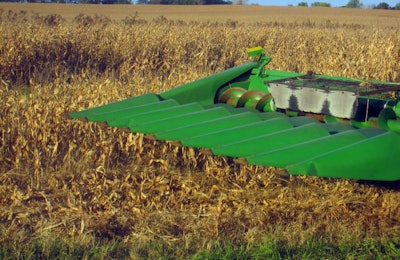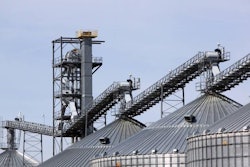
US Grains Council finds 2019 corn quality, yields only slightly lower than previous years
The U.S. Grains Council is praising farmer resiliency after its annual corn harvest survey determined U.S. corn quality declined only slightly, despite challenging planting and harvest conditions in 2019.
About 82% of last year’s harvest met the criteria for U.S. grade No. 2, according to the January 2 report, compared with the roughly 95% of export cargo that met that criteria last year. Last year’s crop is also entering the market with lower average weight, protein and starch content than previous years’ and higher rates of damage and stress cracking, according to the report.
However, U.S. farmers still brought in their sixth-largest harvest on record, and declines in quality were minor given this year’s extreme weather conditions, according to Kurt Shultz, senior director of global strategies for the U.S. Grains Council. While U.S. corn farmers proved resilient in the face of the weather challenges, he expressed concern about farm profitability and the potential impact of trade tensions and foreign disease outbreaks in the months to come.
‘Not a good time in US agriculture’
It remains to be seen whether the nascent trade deal with China will ease pressure on U.S. grain exports, and demand for U.S. corn could also be impacted by a loss of demand in China and other markets hit by African swine fever, Shultz said. “Right now it’s unpredictable,” he said. “Right now is not a good time in U.S. agriculture.”
While international economics could produce another difficult year for U.S. farmers, Shultz said he didn’t believe the slight decrease in this year’s crop quality would impact its international competitiveness. About 9% of this year’s crop is estimated to contain stress cracks, up from a five-year average of 5%. Heat drying, necessary due to the crop’s relatively high moisture content, likely contributed to cracking this year, which could increase the crop’s fragility in shipping. However, Shultz said the slight uptick in cracking was unlikely to dissuade international buyers.
The survey also identified a slight increase in the prevalence of certain mycotoxins, especially deoxynivalenol (DON). Though 100% of samples surveyed came in under the FDA’s advisory level for DON of 5 ppm, only 59.9% tested below the U.S. Department of Agriculture’s stricter “lower conformance limit” of 0.5 ppm. This year’s crop also had a below-average kernel weight, and the kernels’ chemical composition showed slight decreases in protein and starch concentrations.
On the whole, Shultz said the overall consistency of the corn crop was a testament to the resilience of U.S. farmers, and the quality of their crops’ genetics.
“We had a lower year in the sense of some of these trends, in chemical composition, but I think we will see that recover easily next year,” he said. Whether the farmers themselves see a recovery and continue to plant record-breaking acreages, he said, is more difficult to predict. “We should continue to see a large corn crop next year, but planting decisions will be based on economics.”











